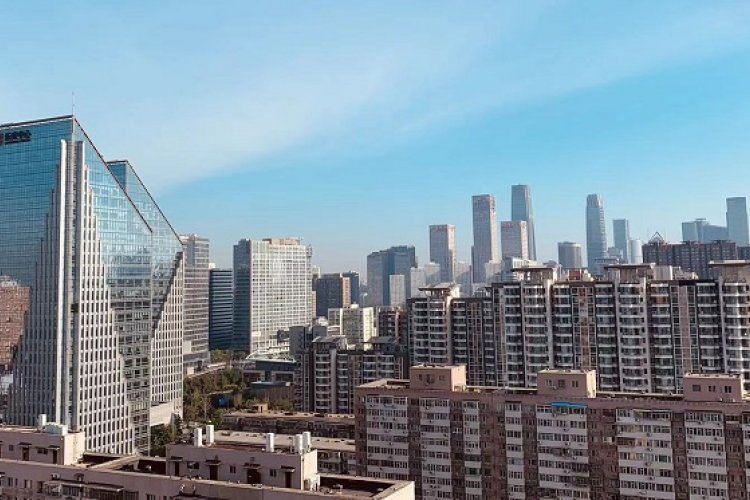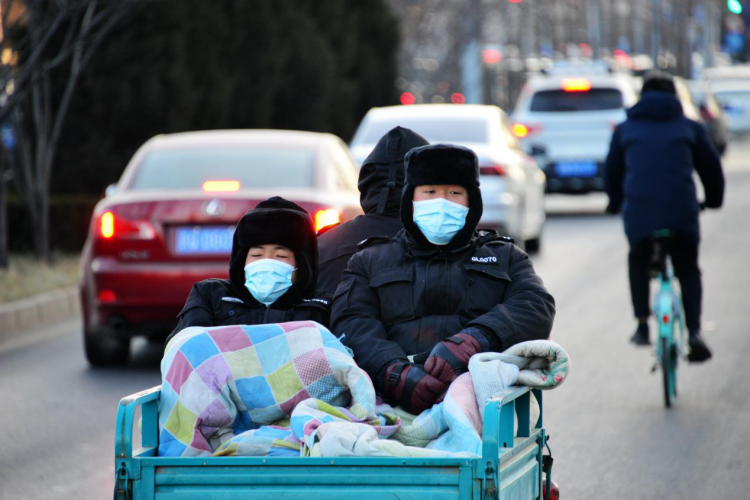Beicology: Bamboo Touted as the "Hardwood of the Future" at Beijing's Int'l Horticulture Exhibition
How bad is the smog these days, really? Who is keeping tabs on the state of our drinking water? What has the government done about carbon emissions lately? In Beicology we turn our focus toward environmental news in the capital.
Today, Liu Kewei extolls the virtues of bamboo. “Most people tell me ‘I only think about bamboo when I see pandas. I never dreamt it could be used for construction!’” says the coordinator of the Global Bamboo Construction Programme at the International Bamboo and Rattan Organization (INBAR), which unveiled a bamboo-themed pavilion in April at the ongoing 2019 Beijing Horticulture Exhibition in Yanqing.

She then chuckles at how visitors marvel at the pavilion's arching roof beams made of that environmentally friendly material (pictured in the lead image above). The INBAR Pavilion was designed by architect Mauricio Cardenas Laverde one of the 28 bamboo construction experts that make up the INBAR Construction Task Force. The structure also houses everything from chic furniture to elegant tableware, musical instruments, and even clothing made of the incredibly versatile plant, amounting to a showcase of bamboo’s practicality and aesthetic value.
However, before she became the coordinator of INBAR’s Global Bamboo Construction Programme, Liu worked in a far less sustainable field. In fact, her current role at that Beijing-based independent intergovernmental organization, which is dedicated to promoting environmentally friendly, sustainable bamboo construction, is a practical 180 from the concrete and steel houses she once worked on as a structural engineer.
“I was unsure at first because bamboo construction is not mainstream at all,” recalls Liu, who was born in Sichuan but now works at INBAR’s Beijing headquarters, about first being approached by the intergovernmental organization back in 2008. However, those very doubts also stirred her curiosity toward the niche material. The creative benefits of the work were then quickly outshone by its moral imperative, or, as Liu puts it: “It didn’t take long for me to see that working with bamboo is what people need for the future.”

Aside from making an impression on the public with tangible, beautiful bamboo wares at events like the Horticulture Exhibition, Liu also spends much of her time educating people about bamboo’s benefits with her colleagues. She recently organized the first-ever International Bamboo Construction Competition, the final of which was held in the garden of the INBAR Pavilion at the Beijing Horticulture Expo. This initiative attracted the participation of more than 500 architecture, civil engineering, and landscape design students from all around the world.
“I think if we can use more natural materials in construction it will definitely help environmental protection,” Liu says, adding that bamboo is a prime example because it "grows very fast, and normally we can harvest it quickly. Such material can help us deal with climate change and offset carbon because it is much more environmentally friendly to produce.” That's especially true when compared to the steel and concrete material Liu used to work with before joining the INBAR fold.

Hans Friederich, former director-general at INBAR and a consultant for the bamboo pavilion's construction in its early days, concurs, pointing out that “bamboo is very good for construction because it’s strong and can be considered the hardwood of the future. But it’s also flexible, making it resilient when facing earthquakes and natural disasters.”
He goes on to describe how the material, despite its woodgrain-like appearance, is actually a form of grass. And as a grass, rather than the tree it appears to be, bamboo's extra-strong roots hold the soil together, making its mass cultivation particularly beneficial for land preservation and restoration in an era where mudslides are on the rise thanks to widespread clear-cutting.

“Grasses like bamboo not only grow very fast but also absorb CO2 like no other,” Friederich adds of bamboo's attributes.
Because of these reasons, both Liu and Friederich have high hopes that attendees of the Horticultural Exhibition will become better versed in the numerous benefits of bamboo, ones that stretch far past just keeping China's most famous animal full.
Find more information about the ongoing Beijing Horticulture Exhibition in Yanqing here.
Read more of our ecological coverage here.
More stories by this author here.
Email: kylemullin@truerun.com
Twitter: @MulKyle
Instagram: mullin.kyle
Photos courtesy of INBAR







